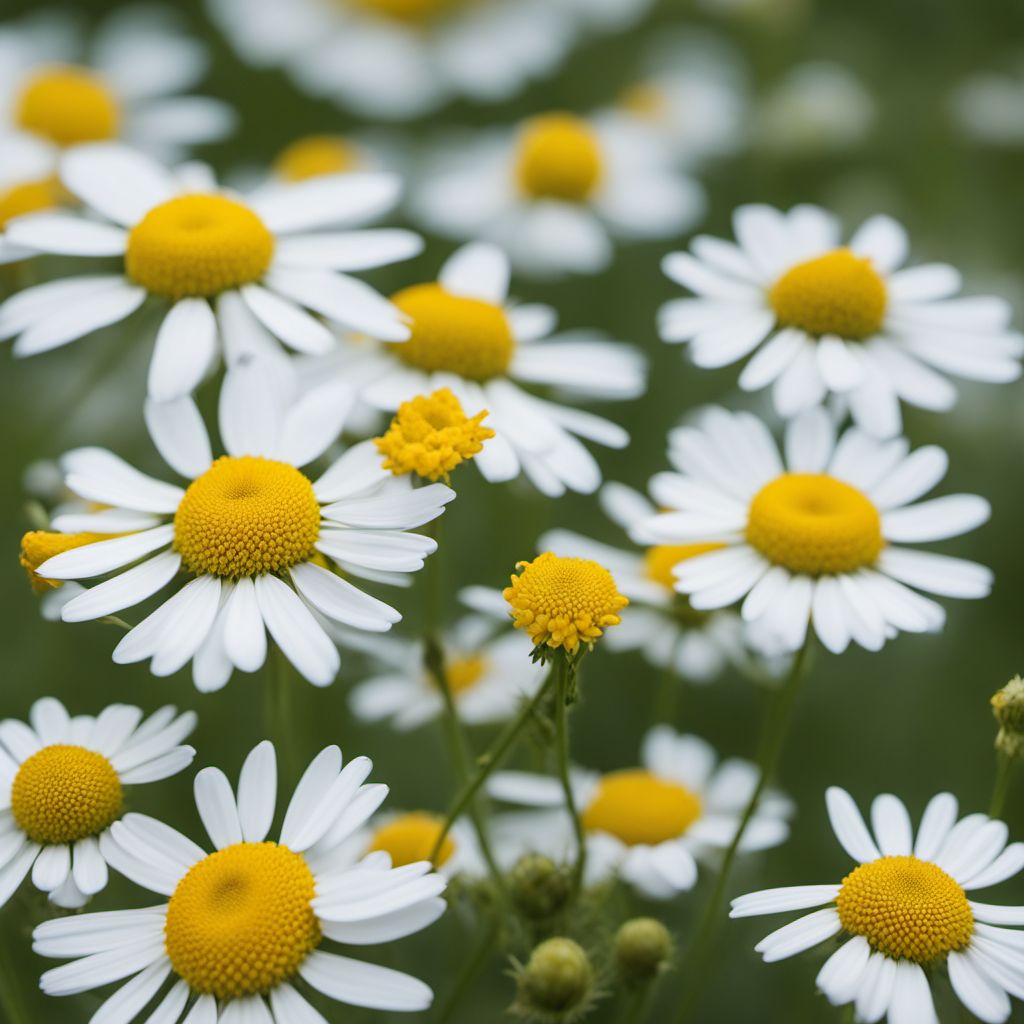
Ingredient
Chamomile
The Soothing Herb
Chamomile is a small, daisy-like flower that belongs to the Asteraceae family. It is known for its delicate floral aroma, which is often described as apple-like or honey-like. The flowers are typically dried and used to make herbal teas, infusions, or incorporated into various dishes for their subtle flavor and calming effects.
Origins and history
Chamomile has a long history dating back to ancient Egypt, where it was used for its medicinal properties and as an offering to the gods. It has been widely cultivated in Europe, Asia, and North America for centuries and is renowned for its calming and soothing effects. Chamomile tea is a popular herbal remedy for promoting relaxation and aiding in sleep.
Nutritional information
Chamomile is a good source of antioxidants and is known for its anti-inflammatory and calming properties. It contains essential oils, such as bisabolol and chamazulene, which contribute to its therapeutic effects. Chamomile tea is also low in calories and caffeine-free, making it a popular choice for those seeking a soothing and caffeine-free beverage.
Allergens
There are no known allergens associated with chamomile.
How to select
When selecting chamomile, look for dried flowers that are whole and intact, with a vibrant yellow color. Avoid flowers that appear brown or discolored, as they may indicate poor quality or age. Opt for organic or pesticide-free chamomile whenever possible to ensure the highest quality and purity of the flowers.
Storage recommendations
To maintain the freshness and flavor of chamomile flowers, store them in airtight containers or resealable bags in a cool, dry place. Avoid exposure to moisture, heat, or direct sunlight, as these can degrade the quality of the flowers. Properly stored chamomile flowers can retain their flavor and aroma for up to a year.
How to produce
Chamomile can be easily grown in home gardens or small pots. It thrives in well-drained soil and requires moderate sunlight. Sow the seeds or plant seedlings in the desired location, ensuring they have enough space to grow. Water the plants regularly and harvest the flowers when they are fully bloomed. Dry the flowers by hanging them upside down in a cool, dry place, away from direct sunlight. Once dried, store the chamomile flowers in airtight containers.
Preparation tips
Chamomile flowers can be used to make soothing herbal teas by steeping them in hot water for 5-10 minutes. The tea can be enjoyed on its own or sweetened with honey or lemon. Chamomile flowers can also be infused into syrups, vinegars, or oils to add a delicate floral flavor to desserts, dressings, or marinades. Additionally, chamomile flowers can be used as a garnish or decoration for cakes, pastries, or salads.
Culinary uses
Chamomile is commonly used in herbal teas, tisanes, or infusions for its calming and soothing effects. It is also incorporated into various desserts, such as cakes, cookies, or ice creams, to add a subtle floral flavor. Chamomile can be used as a natural remedy for digestive issues or as an ingredient in skincare products due to its anti-inflammatory properties.
Availability
Chamomile is widely available in grocery stores, health food stores, and online retailers. It is commonly cultivated in countries such as Germany, Egypt, Hungary, and the United States.

